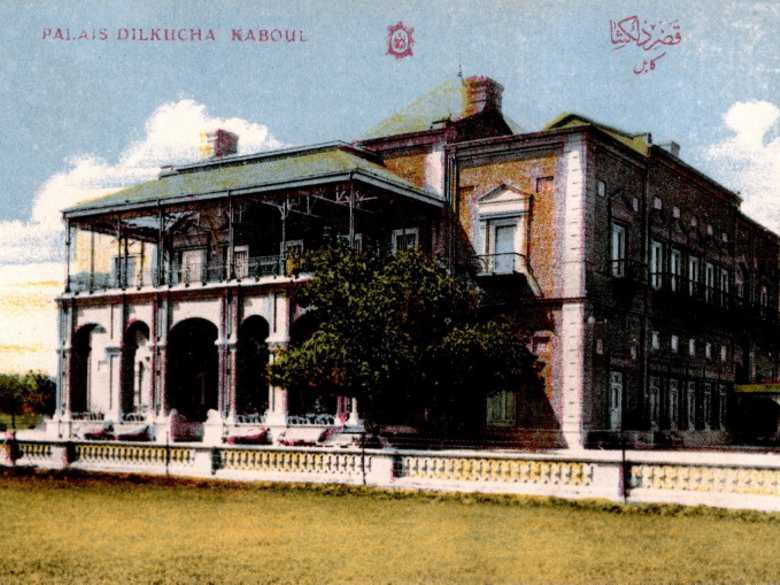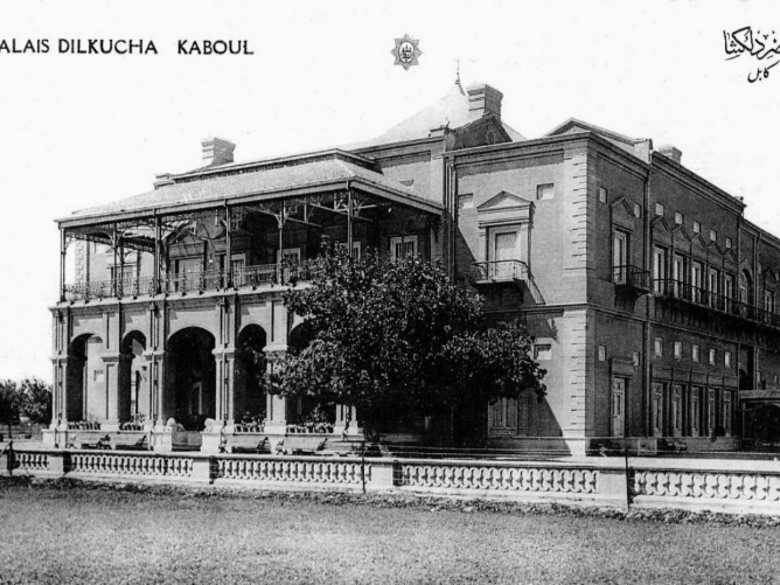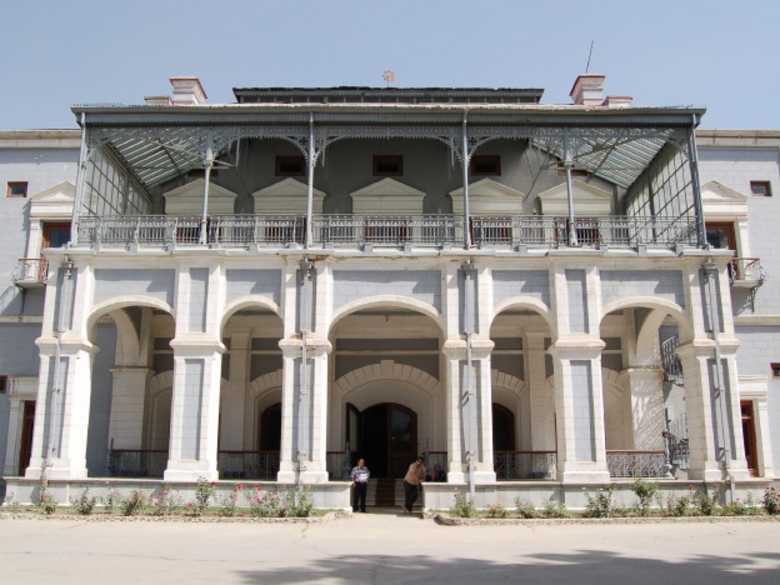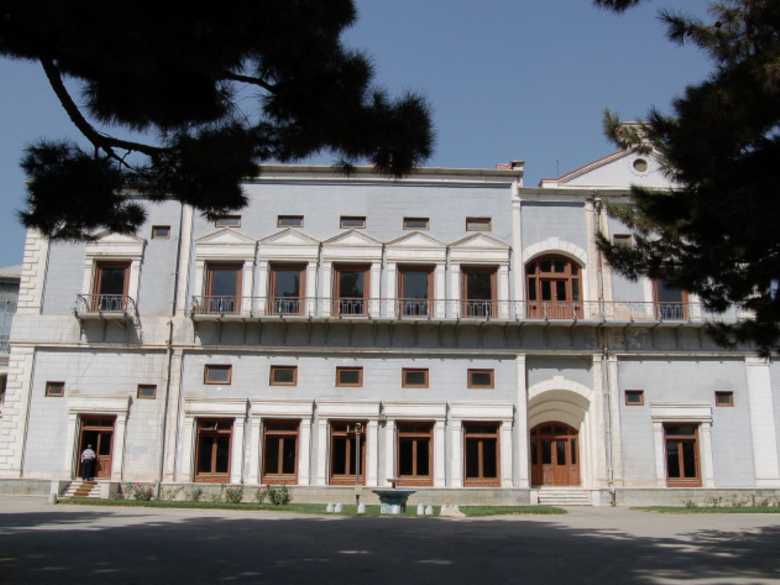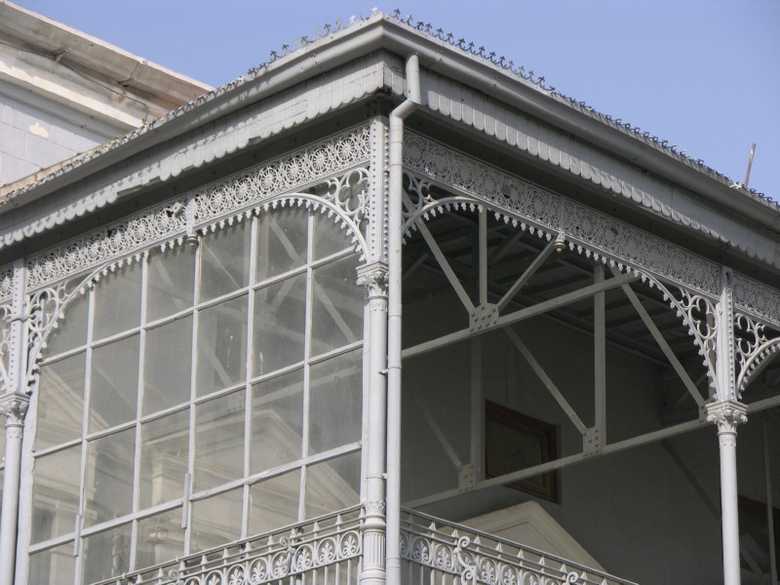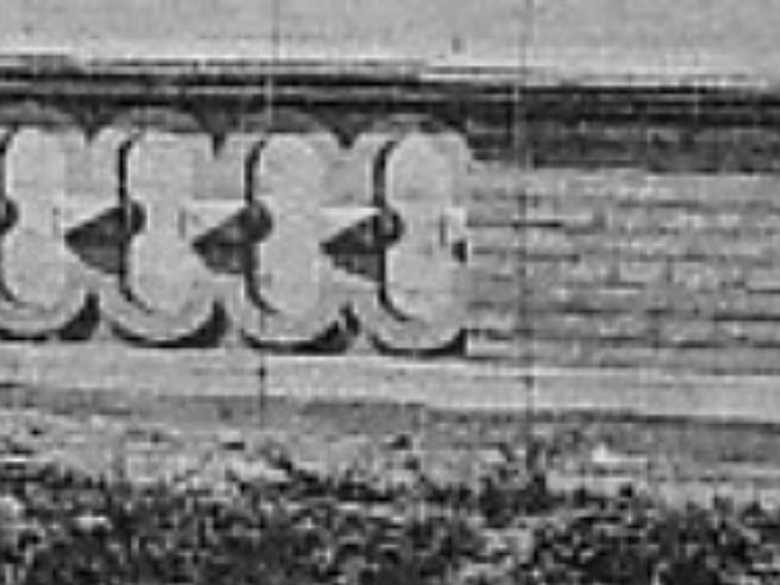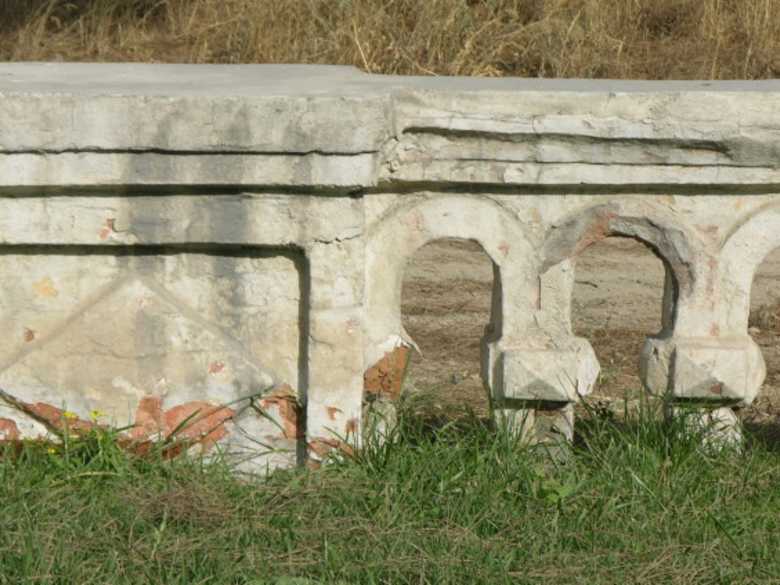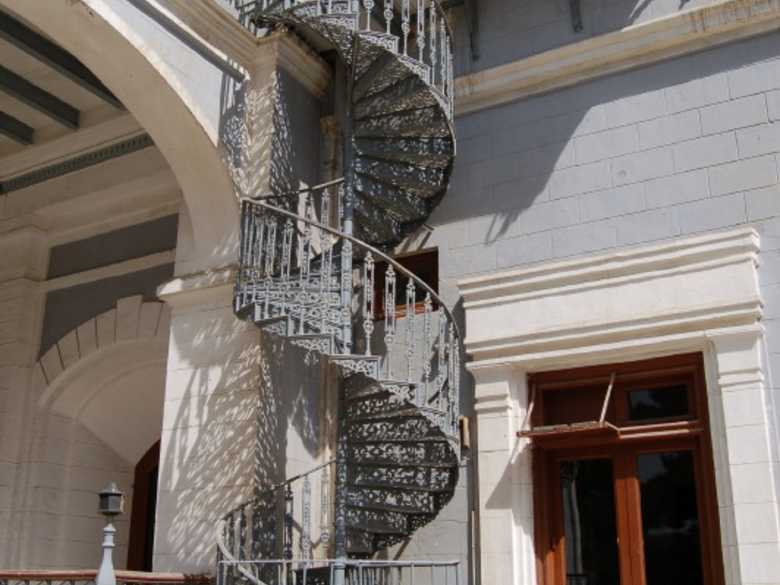SdA 1-02 — Le palais delkosha
Vue général du palais delkosha, prise de l’est, construit sous l’émir Habibullah Khan, de 1901 à 1913, par l’architecte anglais Finlayson.
Vue général du palais delkosha, prise de l’est, construit sous l’émir Habibullah Khan, de 1901 à 1913, par l’architecte anglais Finlayson.
Photographie du palais delkosha, après sa rénovation en 2005, prise le 24 septembre 2006 par Paul Bucherer: La façade sud-est
Photographie du palais delkosha, après sa rénovation en 2005, prise le 24 septembre 2006 par Paul Bucherer: La façade nord-est
Photographie du palais delkosha, après sa rénovation en 2005, prise le 24 septembre 2006 par Paul Bucherer: La décoration en fonte du balcon à la façade sud-est
Photographie du palais delkosha, après sa rénovation en 2005, prise le 24 septembre 2006 par Paul Bucherer: La balustrade moderne
Photographie du palais delkosha, après sa rénovation en 2005, prise le 24 septembre 2006 par Paul Bucherer: L’escalier en colimaçon en fonte à la façade SE
Vue général du palais delkosha, prise de l’est, construit sous l’émir Habibullah Khan, de 1901 à 1913, par l’architecte anglais Finlayson.
PALAIS DILKUCHA KABOUL
qasr-e delkoshâ / kâbol
qasr-e delkoshâ / kâbol
- Souvenir d'Afghanistan (série 2 : grand format) SdA 2-02 : identique, mais plus large à droite.
- Souvenir d'Afghanistan (série 3 : double face) SdA 3-021 : identique, mais plus large à droite.
- Foreign Department, Frontier B, Pros. May 1906, Nos. 132-136: "Accident to Mr. H. J. Finlayson, electrical engineer in the service of the Amir at Kabul." Finlayson was engaged to build the Delkusha Palace for Emir Habibullah Khan. At the end of March 1906 he fell from the 2nd storey of the building 24 feet deep and broke his thigh bone. He was replaced mid-June by Mr. Joseph Rushworth Halliday.
- Mujal-e kabul 2/8, no. 20 (1311/1932), f.p. 802 : planche noir et blanc SdA 4-02 coupée et collée dans le journal, "qasr-e delkusha kabul".
- Hamilton, A. (1906) : Afghanistan, pp. 347-348 : "The residence which will become eventually the principal seat of the Amir in Kabul is the Dil Kusha Palace. This is still in process of construction. Much time has been spent over the work, Mr. Finlayson, the architect retained by the Amir, being delayed with his task by native jealousies and Court intrigues."
- Furon, R. (1926) : L’Afghanistan, f.p. 80 : photo identique, "Kaboul / le nouveau palais royal".
- Rybitschka, E. (1927) : Im gottgegebenen Afghanistan, p. 64 : "Zum erstenmal wohl [1916] in der ganzen mohammedanischen Geschichte Afghanistans wurden im Lande nicht nur Skulpturen geschaffen, sondern auch öffentlich vor dem königlichen Palast Dil kuscha aufgestellt. Der Koran verbietet bekanntlich die Nachbildung der menschlichen Gestalt. […]"; fp. 80 : une sculpture de Farago.
- Jewett, A.C.; Bell, M. (1948) : An American Engineer in Afghanistan, p. 219 : "The Koti-dil-Kusha ('the building that expands the heart'), this square two-story building of brick and stone, is useless and as ugly as a barn. It could be built for thirty thousand dollars easily, but has been a source of graft for Europeans and natives for years. […]"
- Dupree, N.H. (1977) : An Historical Guide to Afghanistan, p. 82 : "Through the third gate one may catch a glimpse of the Dilkhusha (Heart's Delight) Palace designed for Amir Habibullah in 1907 by an English architect, Mr. Finlayson. The building took so long to complete, however, that the Amir, known for his sharp sense of humour, is said to have quipped, 'I should have named it Heart's Despair!' King Nadir Shah was assassinated on the lawn of this palace in 1933. […]"
- Dupree, N.H. (1977) : Early 20th Century Afghan Adaptations of European Architecture, p. 17 : "Amir Abdur Rahman’s eldest son and successor was not to be outdone by his younger brother. Less than a year before his father died of gout, he contracted with an English architect from India who designed the Dilkusha, «Heart’s Delight», a solid, cube-like two-storey palace of large dimensions which in detail and general architectural features followed the Zain ul-Emorat. Here, however, the roof was crowned with a spacious lantern roof illuminating an elaborate coffered ceiling of carved wood over a monumental staircase rising from an entrance foyer. The plan, clearly arranged with large halls lying uniformly above one-another, was one he employed consistently throughout his reign. […]"; p. 19 : "Amir Habibullah’s building programmes were beset with enormous difficulties. Dilkusha, for instance, was under construction for thirteen years and cost exceeded estimates 30 fold, because of extraordinary graft and duplicity on the part of both European suppliers and Afghan supervisors. […]"
- Schinasi, M. (2008) : Kaboul 1773-1948, Naissance et croissance d'une capitale royale, pp. 106-107 : "Delkoshâ était une construction massive d'un étage, de plan carré, en briques et en pierres ; l'arête des murs extérieurs était soulignée par des briques apparentes, un motif qui se retrouvera ailleurs. Côté sud, la façade présentait sur presque toute sa longueur un grand porche pourvu de cinq arcades, dont l'une, l'arcade centrale, l'arcade d'entrée, était gardée par deux lions de pierre couchés se faisant face ; par la suite, une terrasse couverte fut ajoutée au-dessus du porche. […] A Delkoshâ, la technologie moderne qui fascinait l'émir fut très remarquée : dans un poème de compliments louant le luxe du nouveau palais, le poète Mokhles, panégyriste du règne serâjiya, s'émerveilla d'y voir installé l'éclairage électrique, tandis que Serâj ol-akhbâr soulignait la présence d'une machine 'inimaginable', un ascenseur... Un chauffage même était prévu, dont l'ingénieur Jewett fut chargé d'étudier l'installation et, ultérieurement, d'autres travaux furent demandés aux réfugiés autrichiens, dont une série d'oeuvres sculptées commandées à l'un d'eux, un sculpteur nommé Farago."
Image No.
SdA 1-02
Collection
Souvenir d’Afghanistan 1925-1927
Series
SdA 1 (petit format, 1925) 01 à 51 : Emir Habibullah
Format
88/138 mm (+ 11 mm marge perforée),couverture orange ou verte
Quality
version noir et blanc : excellente;version coloriée : flou dû à la colorisation
Place, date
Kabul, 190?
Descriptors
Latitude / Longitude34.526633 / 69.181514
Google Earth34°31'36" N / 69°10'52" E / 1805 m
Google Mapshttps://maps.google.com
Zoom Earthhttps://zoom.earth
You know more about this picture?


